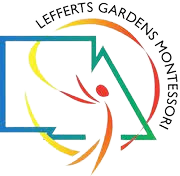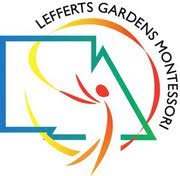Elementary Students Learning Journey from the Wisdoms of Nature
by Betul Kamer Gun LGM Elementary TeacherTime has changed and science has made great progress, Although the world seems to be changing, The Universe has never changed. The Law of nature has continued since the first days of the universe. It is only that we perceive that it has changed.
One of the most debated issues is what we can teach 21st-century children. So what is the most important thing we need to learn in life and give to children?
I respond to these questions in accordance with the most powerful educational approach. This is the Montessori educational system. Although developed over 100 years ago, the Montessori approach is as current today, as it was on its first day. The success of this approach has been demonstrated numerous times, most notably in scientific studies on children’s cognitive development. Because at the heart of the Montessori educational system is the teaching of showing the universe as a whole to children. The universe contains the answers to all questions.
Children of the Elementary years make an effort to understand the universe and its role in it. Maria Montessori realized this natural tendency in children’s interest moving in the direction of this creative curriculum on cosmic education philosophy: The perspective of the child in the elementary years is, Where am I living? How did the universe come into existence? How can I serve the universe to create a legacy for future generations? Actually, children simply just want to understand the universe.
In response to this trend, Maria Montessori developed a curriculum based on this natural tendency in children.. She called it cosmic education which was put in place in her classrooms. Cosmic education can be explained in a few words.It is made up of the five main stories that comprise the entire education curriculum. Throughout the school years, the Montessori teacher presents five stories in order to demonstrate the universe. These stories stimulate the children’s interest and energize their desire to learn more about the world. It happens "through the keys of the world," as Montessori states.The titles of these stories are as follows: The beginning of the universe, which explains how the universe began. The second story is The Coming of Life, which depicts the beginning of life on Earth, and the third story is The Story of the Human, which tells us about the establishment of civilization after the first human being. Then the Progression of the story of Language and Mathematics.
“From this place of wondering and awe,” Montessori developed what is called The Cosmic Curriculum. At its very simplest, The Cosmic Curriculum is the study of geography, history, biology and the physical sciences. It is a way for students to understand the universe and their place in it. It is a study of the past, present and future that begins with imagination and curiosity, dives into facts and information, and results in abstraction of concepts, which then again leads to more questions that feed the imagination. This perpetual feedback loop is the engine of intrinsic motivation at the 6-9 age level. Montessori said, “Touching for the younger child is what imagining is for the older one.” On the former age level, we would have worked on the Sensorial Plane as, for the latter, we work on the level of the imagination.” (Montessori, 1996, p. 22)
What is the key to cosmic education? It's all about the mind. The human mind seeks connection in life through experiences: seeing, and dealing with problems and love of learning. We are born with an innate desire to understand the causes and consequences of our actions. Even if we believe we have forgotten, the mind makes an effort to connect every empty moment. Cosmic education's mission is the best way to help children connect with the universe. After all, do you believe that learning should take place solely in the classroom? As a Montessori teacher, I would say that we can learn anywhere. Nature, in particular, is the best place to connect us to the universe. So rather than studying in the classroom, we are also going to the nature park to journey and learn from the wisdoms of nature. Our motto is: Learning from Nature.
It's amazing how much we learn from spending time outside with children. Connecting children to nature, in my opinion, is the most valuable lesson we can teach them as educators. After a few questions to pique their interest, we head out into the great outdoors and it's fun to sit back and watch the magic unfold.
What kinds of skills do children learn while spending time outdoors?
A learning environment without walls encourages the development of the child's free spirit while also making them feel more comfortable. They derive an incredible amount of pleasure from their learning in this manner. They are used as exploration tools to help people discover new things. Even though we are going to the same location, we will see and do things that are different. They develop a multi-dimensional way of thinking and become more sensitive to their surroundings. They are developing their observation skills by paying attention to nature and using their five senses and then refining their analysis skills by writing down their findings. In addition, when we walk in nature, we get closer to our spiritual truth because the beauty of the environment feeds our soul and mind.
Maria Montessori's book,The Absorbent Mind, describes children's learning experiences in nature as follows, based on her observations of children: "The child has a different relation to his environment from ours. the child absorbs it. The things he sees are not just remembered; they form part of his soul. He incarnates in himself all in the world about him that his eyes see and his ears hear.” (Maria Montessori -Absorbent Mind)
For us, nature is everything, and so this list could go on endlessly. We are learning and being inspired by one of the most significant sources accessible to us: the universe. As a teacher, I've found that the most valuable lesson we can teach children is connecting them with nature. Furthermore, every lesson we spend in nature with children is a gift of new knowledge.

